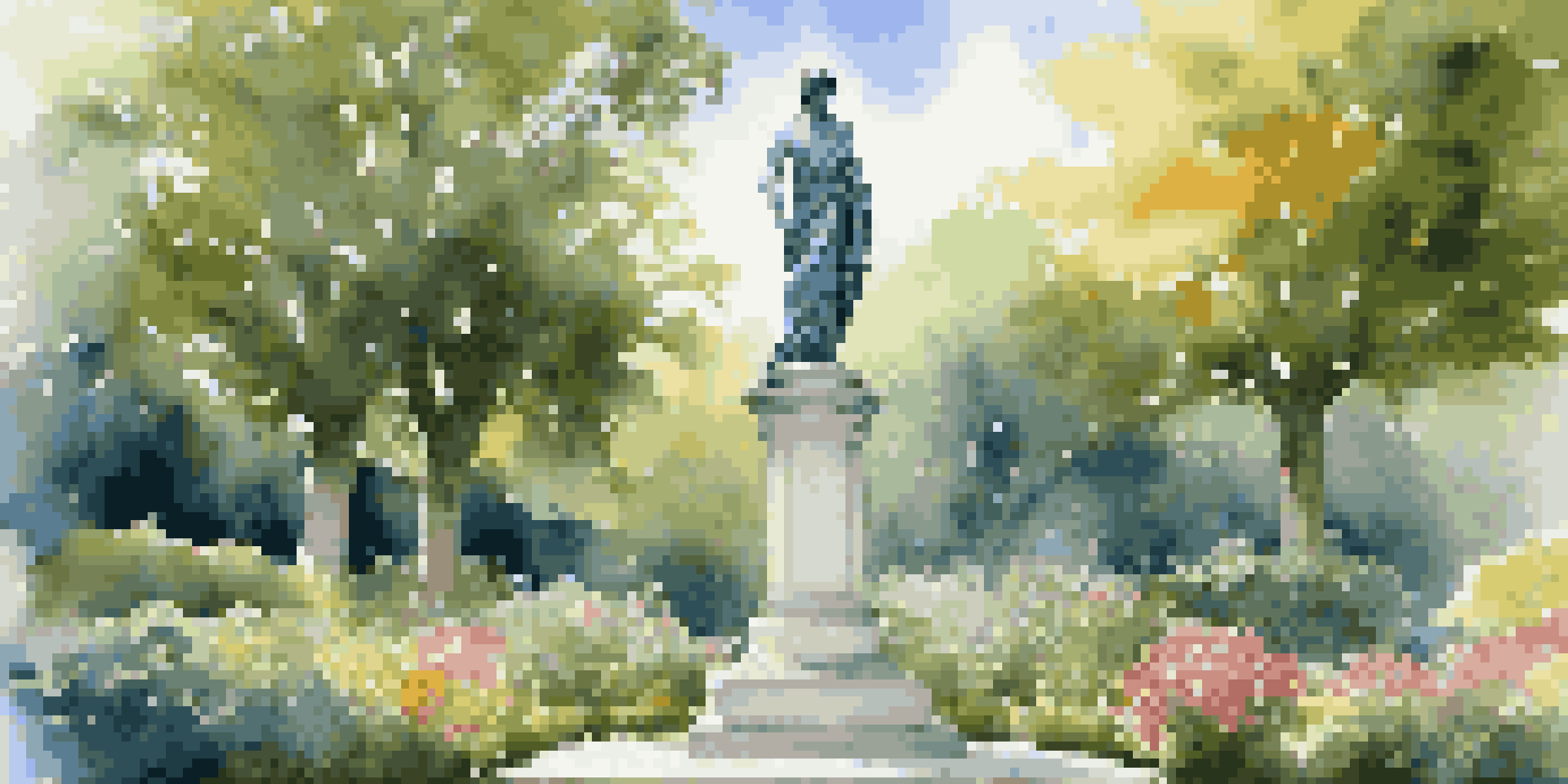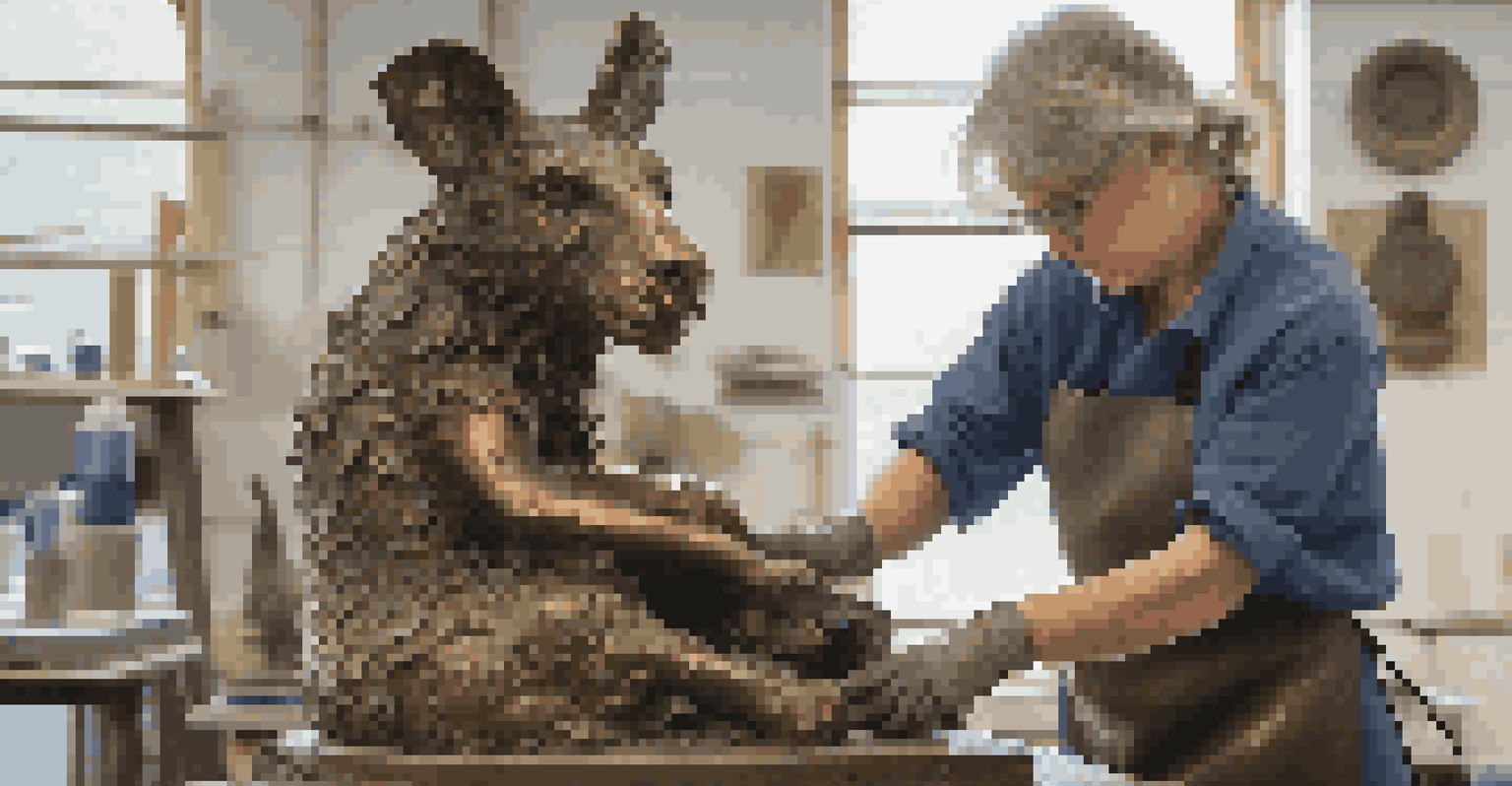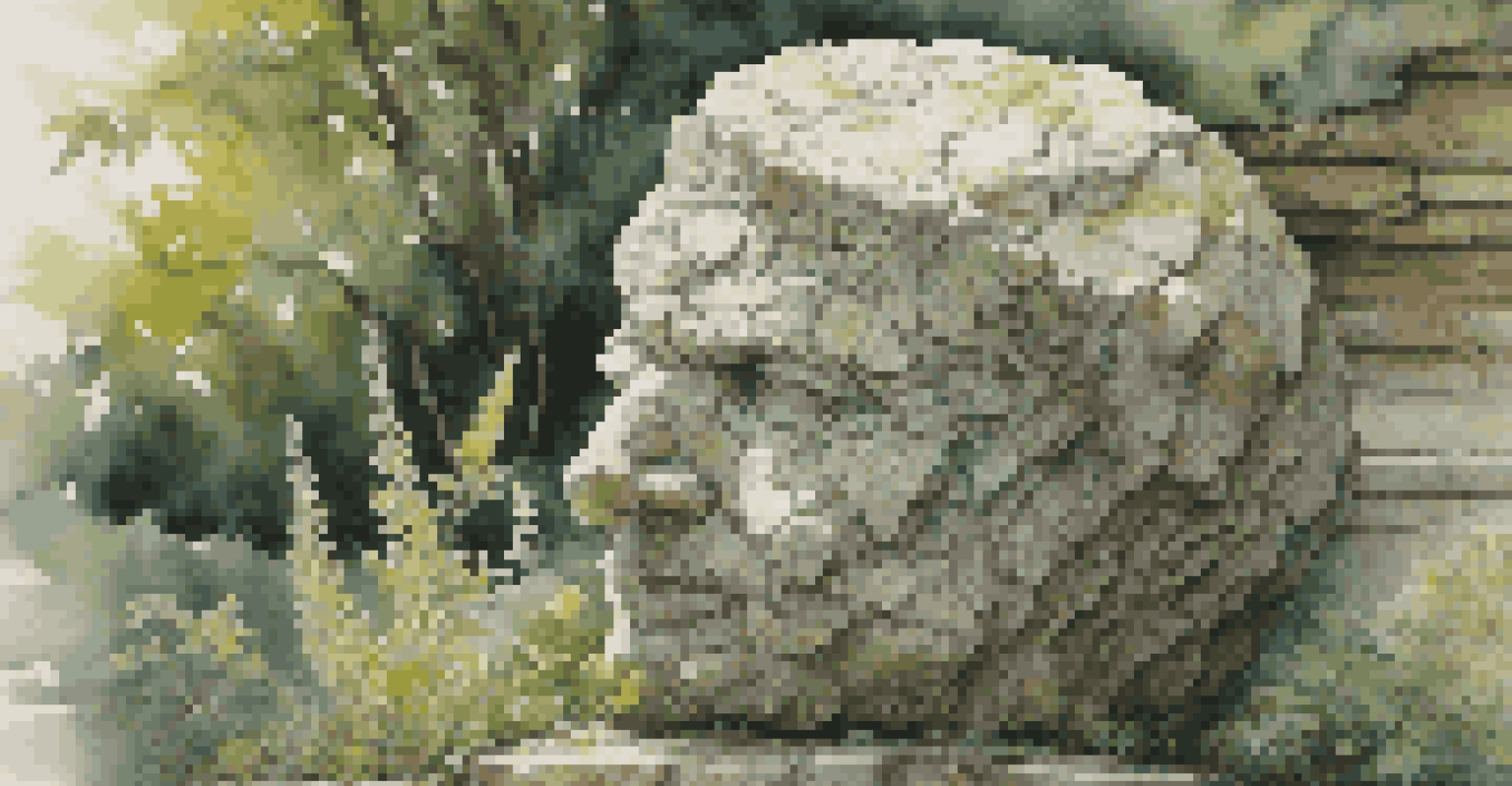Sculpture Conservation: Preserving Artistic Masterpieces

Understanding Sculpture Conservation and Its Importance
Sculpture conservation is the practice of preserving, repairing, and maintaining sculptures to ensure their longevity. It plays a crucial role in safeguarding our cultural heritage, allowing future generations to appreciate these artistic masterpieces. Without conservation efforts, many sculptures would succumb to environmental damage, neglect, or improper handling.
Preservation is not a long-term project; it’s a commitment to the future.
Imagine a beautiful statue standing in a park, slowly being worn down by rain and pollution. Conservationists step in like guardians, employing specialized techniques to restore its original beauty while respecting its history. This delicate balance of preservation and restoration is fundamental in maintaining the integrity of these works of art.
Ultimately, sculpture conservation is not just about saving physical forms; it's about preserving stories, emotions, and cultural significance that these artworks embody. By ensuring their survival, we keep our shared history alive for everyone to experience.
Common Challenges in Sculpture Conservation
Sculptures face numerous challenges that can threaten their existence. Environmental factors such as humidity, temperature fluctuations, and pollution can significantly impact the materials used in sculptures, leading to deterioration over time. Additionally, human interactions, whether accidental or intentional, can cause irreversible damage.

For instance, outdoor sculptures are often exposed to harsh weather conditions, which can result in erosion and discoloration. Inside galleries, inadequate lighting or improper display methods can also contribute to a sculpture's decline. Conservators must identify and mitigate these risks to protect the artworks effectively.
Importance of Sculpture Conservation
Sculpture conservation preserves our cultural heritage, ensuring artistic masterpieces endure for future generations.
The art of conservation also involves understanding the materials used in the sculptures, whether they are marble, bronze, or wood. Each material has its own set of vulnerabilities and restoration techniques, making it essential for conservators to be well-versed in various art forms to tackle these challenges successfully.
The Role of the Conservator in Sculpture Preservation
Conservators are the unsung heroes in the world of art preservation. They possess a unique blend of artistic skill, scientific knowledge, and historical understanding that allows them to assess the condition of sculptures accurately. Their work can range from simple cleaning to complex restoration projects that require intricate craftsmanship.
Art is the most beautiful of all lies; it is the heart of our heritage.
Think of a conservator as a doctor for sculptures, diagnosing ailments and prescribing treatments. They carefully analyze the materials and techniques used in the original creation to ensure that any restoration work remains true to the artist's vision. This meticulous attention to detail is what sets professional conservators apart from amateur restoration attempts.
Moreover, conservators often work closely with historians and curators to understand the cultural context of the artwork. This collaboration ensures that preservation methods honor the sculpture's history while maintaining its aesthetic integrity.
Techniques Used in Sculpture Conservation
There are various techniques employed in sculpture conservation, each tailored to address specific issues. For instance, cleaning is a fundamental step that removes dirt and grime without damaging the original surface. Conservators use gentle methods, such as soft brushes or specialized cleaning solutions, to preserve the integrity of the artwork.
Another common technique is consolidation, which involves stabilizing fragile materials to prevent further deterioration. This process can be likened to giving a sculpture a supportive cast, ensuring it remains intact while respecting its original structure. Additionally, inpainting may be used to restore lost details or colors, though conservators are careful to distinguish between original and restored elements.
Challenges in Sculpture Preservation
Environmental factors and human interactions pose significant risks to sculptures, necessitating careful conservation strategies.
Each technique requires an understanding of the sculpture's material composition and condition, ensuring that every intervention is as non-invasive as possible. This commitment to careful restoration helps maintain the artwork's authenticity while prolonging its lifespan.
The Ethical Considerations in Sculpture Conservation
Ethics play a significant role in sculpture conservation, as conservators must navigate the delicate line between restoration and alteration. The goal is to preserve the artwork's authenticity while ensuring it is safe for public display. This often involves tough decisions about how much restoration is appropriate without compromising the original intent of the artist.
For example, if a sculpture has suffered extensive damage, conservators might face pressure to restore it to its 'original' state. However, they must weigh the importance of historical integrity against the desire for aesthetic perfection. This ethical dilemma is at the heart of many conservation debates.
Furthermore, transparency is vital in conservation practices. Conservators often document their processes and decisions, sharing this information with the public to foster understanding and appreciation of the complexities involved in preserving art. By doing so, they honor both the artwork and its history.
Innovations Shaping the Future of Sculpture Conservation
As technology evolves, so do the practices in sculpture conservation. Innovations such as 3D scanning and digital modeling allow conservators to create detailed records of sculptures, capturing every nuance and detail. This technology not only aids in restoration efforts but also serves as a reference for future conservation work.
Moreover, advancements in materials science are leading to the development of new conservation materials that are less invasive and more effective. For example, reversible adhesives and coatings can now be used, allowing for easier future interventions without causing damage to the original artwork.
Ethics in Conservation Practices
Conservators face ethical dilemmas in balancing restoration efforts while maintaining the authenticity and historical integrity of artworks.
These innovations are transforming the landscape of sculpture conservation, enabling conservators to work more effectively while preserving the integrity of the artworks. As the field continues to grow, we can expect even more exciting developments that will enhance our ability to protect artistic masterpieces.
The Impact of Sculpture Conservation on Society
The work of sculpture conservation extends beyond just preserving art; it has a profound impact on society as well. By protecting these cultural treasures, conservators help foster a sense of identity and continuity within communities. Sculptures often serve as symbols of heritage, representing shared histories and values.
Moreover, well-preserved sculptures can enhance tourism and local economies. Visitors are drawn to cities that celebrate their art and history, contributing to a vibrant cultural scene. This, in turn, supports local artists and fosters appreciation for the arts within the community.

Ultimately, sculpture conservation plays a vital role in cultural education, providing opportunities for people to engage with art and history. By preserving these masterpieces, we create a legacy that inspires future generations to value and protect their own cultural heritage.